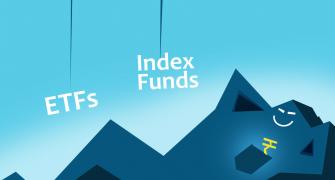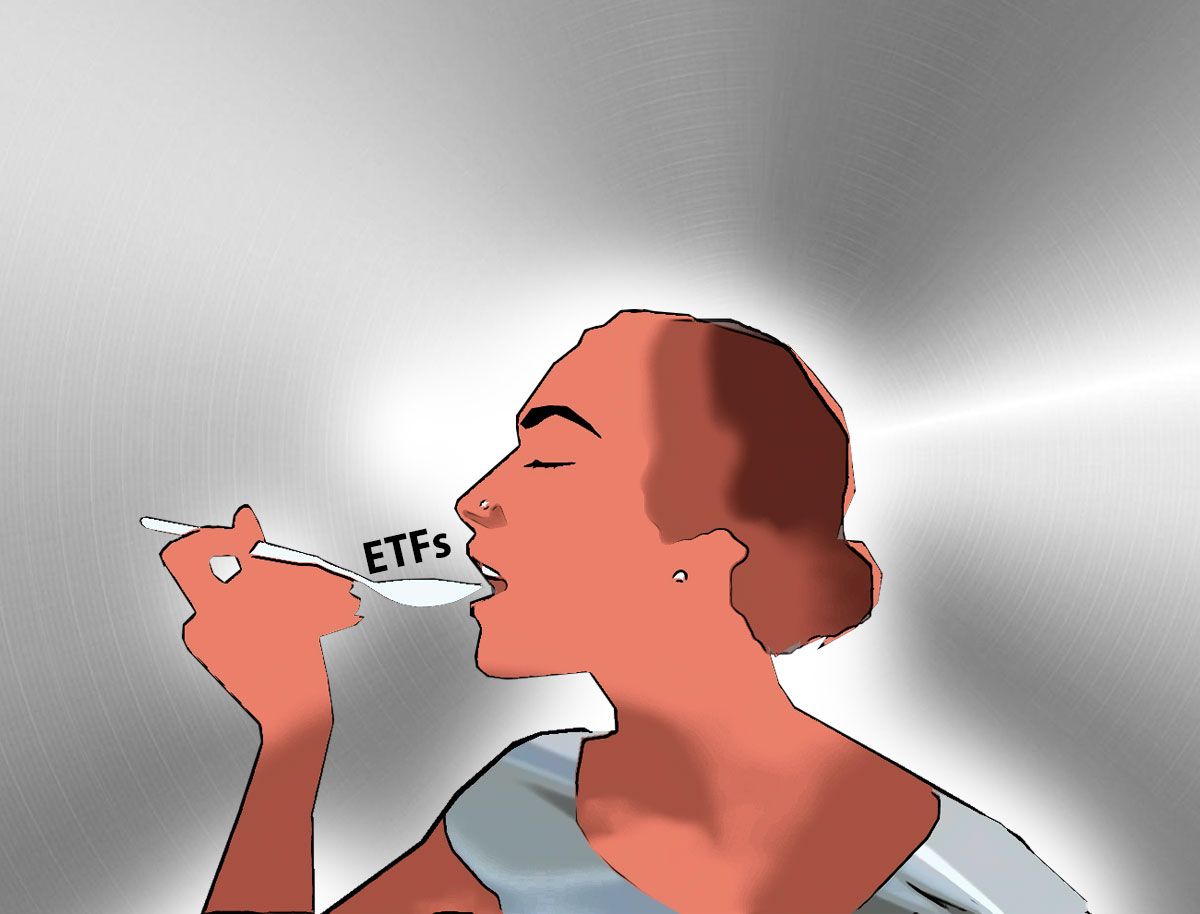'Liquid ETFs help in cash management by enabling a smooth transition between equity and cash within the same settlement cycle, as they trade in the same segment as equity.'

Investor participation in the stock markets is rising. February 2024 alone saw the opening of four million new demat accounts.
These investors can streamline the management of their trading capital by using a liquid exchange-traded fund (ETF).
One such ETF -- DSP S&P BSE Liquid Rate ETF -- was launched recently by DSP Mutual Fund (MF).
How do they work?
Investors can allocate funds meant for the stock market to liquid ETFs, which invest in overnight securities.
"Liquid ETFs invest in Treasury Bills Repurchase (TREPS) traded on the Clearing Corporation of India platform that has the closest maturity, primarily one business day," says Vishal Jain, CEO, Zerodha Fund House.
Siddharth Srivastava, head-ETF product and fund manager at Mirae Asset Investment Managers (India), adds that these ETFs carry low credit and interest-rate risk due to their investment in TREPS.
Liquid ETFs' current annualised yields are around 5.75-6 per cent, better than the savings bank account rate.
Advantage traders
Stock traders can park their money in units of ETFs, instead of with brokers, earn returns from them, and avail margin for trading purposes. They can alternatively sell them and use the proceeds to buy securities.
"Like any other stock, liquid ETFs' settlement takes place on a T+1 basis. They offer a convenient way to invest cash lying idle in between two trades," says Anil Ghelani, head-passive investments and products, DSP Mutual Fund.
Investing in a liquid ETF eliminates the need to transfer funds between a bank savings account and a brokerage account. Money from the sale of liquid ETFs gets credited into the brokerage account and is immediately available for trading.
"Liquid ETFs help in cash management by enabling a smooth transition between equity and cash within the same settlement cycle, as they trade in the same segment as equity," says Jain.
He adds that the ETF units can be used as collateral for placing margins on the exchange and are considered as cash equivalent exposure with a 10 per cent haircut.
Different from liquid funds
In traditional open-ended overnight funds, when units are bought, money moves from an investor's bank account to a mutual fund's bank account.
On redemption of units, it goes to the investor's bank account.
"Liquid mutual funds and overnight mutual funds do not follow the stock exchange settlement cycle and need to be directly settled in the bank account," says Ghelani.
Their investment mandates are also different.
"Liquid funds hold debt and money market securities like t-bills and commercial papers with maturity up to 91 days.
"Overnight funds are similar to liquid ETFs as they also invest in overnight securities.
"Liquid ETFs are traded on the stock exchanges and are easily available for pledging, margin money, etc. But they have relatively higher total expense ratio (TER)," says Srivastava.
The cost factor
Investors in liquid ETFs incur transactional charges, such as exchange fees.
"Considering their relatively shorter investment horizon, brokers generally waive the brokerage for liquid ETFs.
"There are a few other frictional costs like exchange fees of 0.019 per cent for the buy leg and 0.004 per cent for the sell leg, which add up to a total of around 0.023 per cent or 2 basis points.
"This is a relatively small cost if we consider the convenience factor and the potential of accruals on the invested amounts. Liquid ETFs do not have exit load," says Ghelani.
Who should use them?
Traders on stock exchanges would find these ETFs useful as they smoothen the flow of money and make trading convenient.
Liquid ETFs can also be used by investors as a cushion against market volatility.
"They may be used as a component in your short-term debt portfolio and can help reduce risk during volatile times," says Jain.
Srivastava says buy-and-hold investors can potentially avoid them. He cautions that liquid ETFs should be used only as temporary parking instruments.
Investors wanting to use overnight funds for systematic transfer plans (STPs) must, however, initiate them from traditional open-ended overnight or liquid schemes, not from liquid ETFs.

Disclaimer: This article is meant for information purposes only. This article and information do not constitute a distribution, an endorsement, an investment advice, an offer to buy or sell or the solicitation of an offer to buy or sell any securities/schemes or any other financial products/investment products mentioned in this article to influence the opinion or behaviour of the investors/recipients.
Any use of the information/any investment and investment related decisions of the investors/recipients are at their sole discretion and risk. Any advice herein is made on a general basis and does not take into account the specific investment objectives of the specific person or group of persons. Opinions expressed herein are subject to change without notice.
Feature Presentation: Ashish Narsale/Rediff.com









